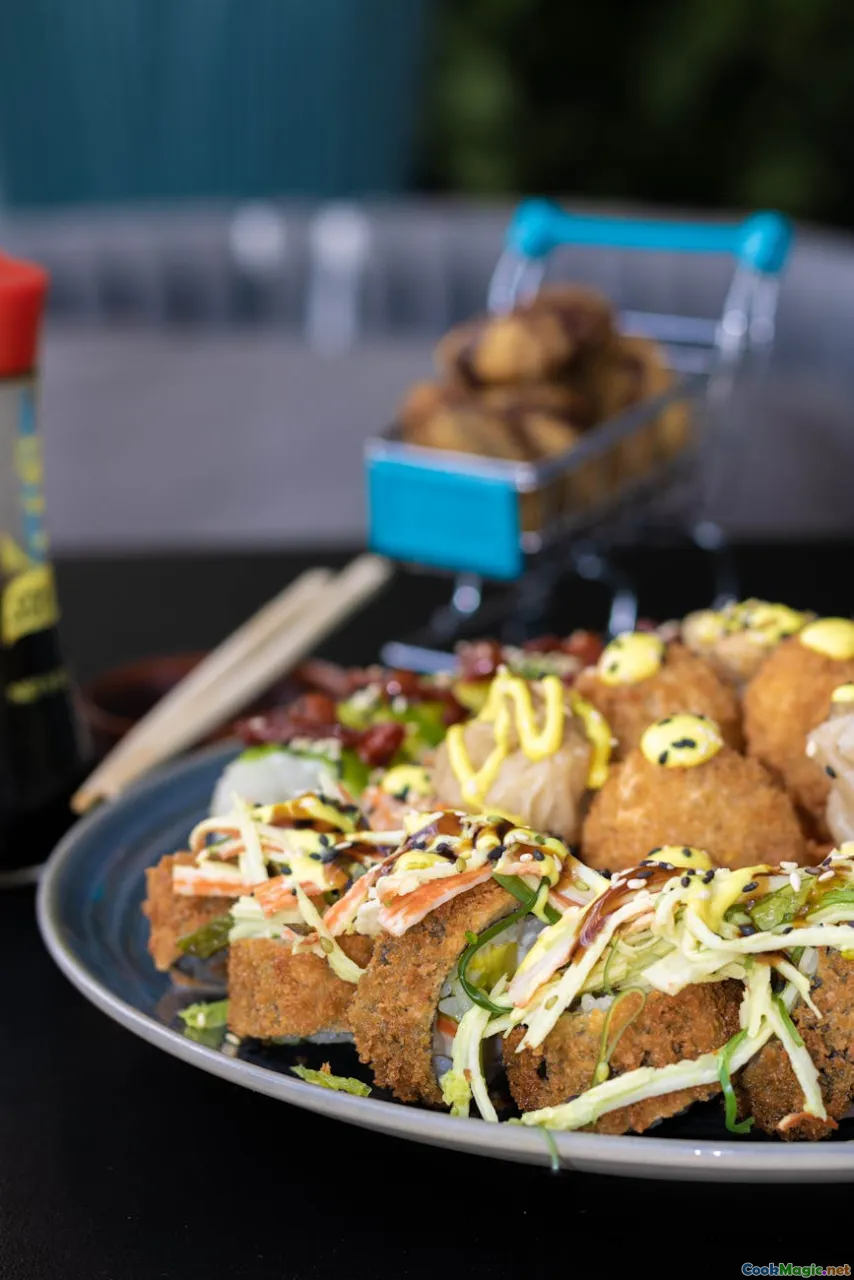Navigating Dietary Restrictions in Fusion Menu Design
8 min read Explore how to thoughtfully craft fusion menus that respect dietary restrictions while celebrating culinary innovation and cultural fusion. April 23, 2025 21:55
Navigating Dietary Restrictions in Fusion Menu Design
Imagine walking into a vibrant European fusion restaurant, where the air is thick with the intoxicating aroma of saffron, garlic, and roasted vegetables. The dishes are a harmonious blend of flavors—Mediterranean olives meet Asian spices, French techniques elevate Latin ingredients. Yet, amid this culinary celebration, a question often lingers: How do chefs craft menus that honor the diverse dietary needs of their guests without compromising the essence of fusion?
This challenge is both an art and a science. It demands not only culinary ingenuity but also a deep understanding of cultural sensitivities and dietary restrictions. As fusion cuisine continues to evolve—merging borders, traditions, and innovation—so too must our approach to inclusivity and health-conscious dining.
In this article, we will explore the multifaceted world of designing fusion menus that navigate dietary restrictions with grace and creativity. From historical insights to practical techniques, personal anecdotes to sensory descriptions, prepare to embark on a journey that celebrates culinary diversity and inclusive innovation.
The Cultural and Historical Context of Fusion Cuisine
Fusion cuisine is more than a trend; it's a reflection of our interconnected world. Originating in the mid-20th century, it embodies the blending of culinary traditions—think of the classic Japanese-Peruvian dishes like ceviche with wasabi or the French-Vietnamese pho with French bread.
European fusion, in particular, has a rich tapestry woven from centuries of trade, colonization, and migration. For example, the Mediterranean coast has long been a crossroads of cultures, where spices from the Middle East mingle with local ingredients, creating a vibrant palette that now influences contemporary fusion dishes.
Understanding this history is crucial when designing menus that respect authenticity while accommodating modern dietary needs. It reminds us that cuisine is a living dialogue—an ongoing conversation between cultures and individuals.
The Emotional and Social Significance of Inclusive Fusion Dining
Food is emotional. It connects us to our heritage, evokes memories, and fosters community. When a chef thoughtfully incorporates dietary restrictions, they are not merely avoiding allergens or ingredients—they are making a statement of respect and inclusion.
For diners with allergies, intolerances, or ethical choices such as vegetarianism, veganism, or religious restrictions, a well-crafted fusion menu can be a source of joy rather than disappointment. Imagine a guest with gluten intolerance savoring a gluten-free Moroccan tagine infused with Moroccan spices and tender vegetables, or a vegan guest relishing a smoky chipotle-infused risotto.
Creating an inclusive environment also enhances social cohesion. It signals that everyone is valued, that their health and beliefs matter—a powerful gesture in today’s diverse society.
Sensory Language: Bringing Dishes to Life
To truly understand fusion cuisine, one must experience it through all senses. Picture a plate of roasted eggplant stuffed with spicy harissa, the exterior charred to a smoky perfection, the interior luxuriously creamy, tinged with the heat of North African peppers.
Or consider a light, zesty ceviche with tropical fruits and herbs, where the citrus tang dances on the tongue, and the sweetness of mango complements the sharpness of lime. The textures—crisp, tender, velvety—combine with vibrant colors that excite the eye.
Sensory storytelling allows chefs to craft dishes that delight and surprise, even when accommodating restrictions. It emphasizes that inclusive meals can be as complex, flavorful, and beautiful as any traditional dish.
Practical Strategies for Navigating Dietary Restrictions in Fusion Menus
1. Comprehensive Ingredient Knowledge
Understanding ingredients and their potential allergens or restrictions is foundational. This includes knowing about hidden sources of gluten, nuts, soy, and dairy in processed products.
2. Flexible Recipes and Substitutions
Design dishes with adaptable components. For example, use coconut milk instead of cream for dairy-free options or chickpea flour as a gluten-free binder.
3. Clear Communication and Labeling
Ensure menus clearly indicate dietary accommodations. Use symbols or descriptions like "gluten-free," "vegan," or "contains nuts."
4. Cultural Sensitivity and Authenticity
Strike a balance between innovation and respect for culinary traditions. Consult with cultural experts or community members when introducing unfamiliar ingredients.
5. Staff Training and Awareness
Educate your team about common dietary restrictions, cross-contamination prevention, and respectful communication with guests.
6. Innovative Plating and Presentation
Use visual cues and creative plating to highlight dietary options, making them appealing and accessible.
Personal Insights and Anecdotes
During my travels through the bustling markets of Barcelona, I encountered a small tapas bar that exemplified inclusive fusion. The chef, a passionate innovator, offered a variety of small plates—some gluten-free, some vegan—all bursting with flavor.
One dish that stood out was a vegan ratatouille tart with a crisp cauliflower crust—an homage to Provençal flavors adapted for plant-based diners. The aroma of roasted peppers and herbs filled the air, and the flaky crust provided a satisfying crunch. Watching diners with diverse dietary needs enjoy the same meal was a testament to thoughtful menu design.
In another instance, a chef I know in Paris mastered the art of creating gluten-free baguettes that maintained the iconic crust and airy crumb, making traditional French sandwiches accessible to those with gluten sensitivities.
These experiences underscore that inclusive fusion is about creativity, respect, and a genuine desire to share culinary joy.
Final Reflections
Designing fusion menus that navigate dietary restrictions is a dynamic challenge—one that invites continuous learning and adaptation. It calls for a blend of cultural sensitivity, culinary innovation, and heartfelt hospitality.
By embracing the diversity of dietary needs, chefs not only broaden their reach but also enrich their craft, creating dishes that are as inclusive as they are delectable. The future of fusion cuisine lies in its ability to unite people through flavor, respecting individual choices while celebrating global culinary artistry.
So next time you craft a menu, remember: the most memorable dishes are those served with understanding, creativity, and a touch of daring. Your guests will taste the difference—and feel truly valued.









